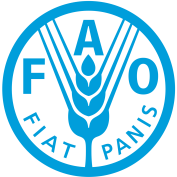Each year, 52.4 million tons of food is sent to landfill, and an additional 10.1 million tons remains unharvested at farms. Moreover, around 31% to 40% of food in the US is wasted even before it reaches consumers.
Nearly 80% of food waste comes from perishable foods. Fruits and vegetables are among the least expensive and fastest spoiling foods, comprising over 40% of total food waste (ReFed 2016).
Food that is wasted represents not only a loss of calories but also a loss of nutrients and, in the US context, landfills can be seen as "vast repositories of lost nutrition" (Spiker et al. 2017). According to 2012 data, food that is wasted at the retail and consumer levels contains 33 g of protein, 5.9 g of dietary fiber, 1.7 micrograms of vitamin D, 286 mg of calcium, 450 mg of phosphorous, and 880 mg of potassium per capita per day (Spiker et al. 2017).
At the same time, food loss and waste entails poor use of resources, such as water and land, and negative environmental impacts. Cereals and pulses, followed by fruits and vegetables, together account for nearly 90 percent of the water footprint of total food that is lost or wasted (FAO 2019).
From the local to the national scale, policies and interventions that reduce and redirect surplus food can benefit the environment while improving food security and public health. In New York, 12% of the population in the 11-county foodshed of the Capital Region is food insecure, at the same time that the area remains one of the top agricultural producing regions in the nation. Local, state, and national programs and policies are currently being developed and implemented to address food waste.
References
FAO. 2019. The State of Food and Agriculture 2019. Moving forward on food loss and waste reduction. Rome. Retrieved from: http://www.fao.org/3/ca6030en/ca6030en.pdf
ReFED (2016). A roadmap to reduce U.S. food waste by 20 percent. Retrieved from: https://www.refed.com/downloads/ReFED_Report_2016.pdf
Spiker, M. L., Hiza, H. A., Siddiqi, S. M., & Neff, R. A. (2017). Wasted food, wasted nutrients: Nutrient loss from wasted food in the United States and comparison to gaps in dietary intake. Journal of the Academy of Nutrition and Dietetics, 117(7), 1031-1040.
United States Environmental Protection Agency (EPA 2019, November 18). Retrieved from: https://www.epa.gov/sustainable-management-food/food-recovery-hierarchy
Learn more about food loss, food waste, and wasted food

FAO - SAVE FOOD: What is food loss and food waste?
The FAO Sustainable Development Goal (SDG) 12.3is "By 2030, halve per capita global food waste at the retail and consumer levels and reduce food losses along production and supply chains, including post-harvest losses." This SDG target has two components: the food loss index and the food waste index.
FAO Technical Platform on the Measurement and Reduction of Food Loss and Waste
FAO Food loss and waste database

Discard Studies:Food. This platform is "designed as an online hub for scholars, activists, environmentalists, students, artists, planners, and others who are asking questions about waste, not just as an ecological problem, but as a process, category, mentality, judgment, an infrastructural and economic challenge, and as a site for producing power as well as struggles against power structures."

Civils Eats is "a daily news source for critical thought about the American food system".
State of the Planet : A blog from The Earth Institute|Columbia University


